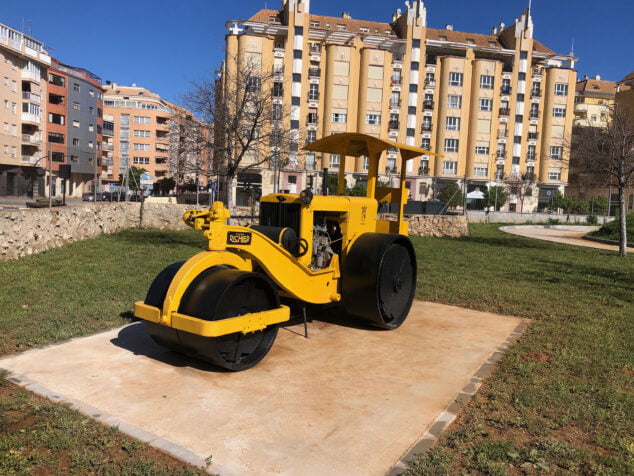«I promised that he would come out on his own foot»: from tamping the first roads of Dénia to a symbol of its industrial archeology
It is one of the most notorious restoration works and that, after months of misfortune, has finally been presented in Dénia. The first steamroller in the Marina Alta is now part of the Bosc de Diana to immortalize this unprecedented industrial architecture recovery project.
It's not just another steamroller. It is La Apisadora, the first machine of this type that came to the region, specifically to the Trade Union Brotherhood of Farmers and Ranchers of Dénia, in 1960. Thanks to it, the first agricultural roads in the municipality were worked to allow farmers to collect oranges that they would later sell in the market and create what has become today the urbanized street map that we know.
The steamroller, by the French company Richter, cost 492.900 pesetas (which would come to €2.962 without counting inflation). A money well invested considering his work and that still starts 60 years later.
The machine that has passed through the hands of different generations
It is a machine that has gone through several rehabilitations, culminating with the definitive one to symbolize the importance of Vocational Training. The students and teachers of the Maria Ibars degree in Transportation and Vehicle Maintenance took charge of hosting this "fossil" in 2018 after ASETRAMA proposed its restoration to the City Council. The director of the center at that time, Josep Antoni Server, upon seeing it, the first thing he thought was "a poor machine." How are you doing!". However, he immediately took the reins and made a promise to himself: "The machine will come out on its own."
A symbol of the value of vocational training
The works were followed by professional training centers throughout Spain and a large part of Europe. It was a unique project, as it allowed students to learn from a piece of their town's history.
The head of the department to which the module belongs, Noel Barber, in fact, was already part of a previous restoration in the mid-80s carried out by the students of the old FP institute. "Finally, the day has come," he said this morning when he appeared before the neighbors from his new home, the Bosc de Diana, where it has become a monument to symbolize the importance of professional training and the industrial history of the city.
And yes, as the then director expected, the Richter toured the streets of Dénia one last time, leaving the María Ibars on her own feet to her last destination. She's been rehabbed outside of her, but in case anyone is wondering if she still starts: yes, she starts.
